

England, a land woven with history and legends, is home to some of the world’s most iconic castles. These ancient sentinels stand proudly across the countryside, marking the landscape with their imposing structures and evocative ruins. Each castle tells a story, a narrative of a bygone era when knights, monarchs, and battles shaped the course of history. The English castles are not merely stone and mortar; they are symbols of the medieval heritage that has shaped England’s identity.
This blog embarks on a journey through time, exploring the majestic castles of England. From their early origins in the aftermath of the Norman Conquest to their role in the power dynamics of medieval England, and finally, to their place in today’s society as cherished monuments and tourist attractions. We delve into the architectural marvels of these castles, uncovering the stories behind their construction, the sieges they withstood, and the royalty that walked their halls.
Our tour will guide you through the historical significance and architectural highlights of ten major castles, each with its unique charm and story. We will also explore the efforts to conserve these magnificent structures and the impact of tourism on their preservation. Whether you are a history enthusiast, an architecture aficionado, or simply looking for an adventure, this blog will provide valuable insights and tips for visiting these historical landmarks.
Join us as we traverse the length and breadth of England, from the rugged coasts of Cornwall to the rolling hills of Northumberland, exploring castles that have stood the test of time. Through conservation efforts and responsible tourism, these castles remain not just relics of the past but vibrant landmarks that continue to inspire and fascinate visitors from around the world.
Historical Background of Castles in the Region
The story of England’s castles begins with the Norman Conquest of 1066, a pivotal event that reshaped the landscape of the British Isles. Following his victory at the Battle of Hastings, William the Conqueror initiated the construction of castles across England to secure his control, suppress resistance, and establish a new feudal order. These early castles, often simple motte-and-bailey structures with wooden palisades atop earthen mounds, served as military fortifications, administrative centers, and symbols of Norman authority.
As the medieval period progressed, the nature and architecture of English castles evolved significantly. By the 12th and 13th centuries, stone replaced wood as the primary building material, giving rise to the imposing stone keeps and curtain walls that dominate the popular imagination today. These architectural advancements not only made castles more formidable against sieges but also reflected the wealth and power of their occupants.
The role of castles in England expanded beyond military defense to become centers of governance and royal power. Iconic structures like the Tower of London and Windsor Castle emerged as key royal residences and seats of administration, embodying the monarchy’s prestige and authority. Castles also played crucial roles in the numerous conflicts that marred the medieval period, including the Anarchy, the Wars of the Roses, and the English Civil War. These conflicts saw castles as both besieged fortresses and strategic assets, shaping the course of English history.
However, the advent of gunpowder and cannons in the late medieval and early modern periods diminished the military efficacy of castles. This technological shift, coupled with changing political and social dynamics, saw many castles lose their defensive purpose. Some were abandoned or dismantled, while others were transformed into opulent palaces or country homes, reflecting the changing tastes and priorities of their owners.
Despite these changes, castles remained potent symbols of heritage and continuity. The 19th and early 20th centuries saw a renewed interest in these medieval structures, driven by the Romantic movement and a burgeoning sense of national identity. Restoration and preservation efforts began to take shape, aimed at safeguarding castles as historical monuments and cultural treasures.
Today, England’s castles are celebrated not only for their architectural beauty and historical significance but also as vibrant cultural sites that attract millions of visitors each year. They stand as testaments to England’s tumultuous past, encapsulating centuries of history, from the Norman Conquest to the present day. The preservation and study of these castles allow us to better understand the social, political, and cultural dynamics that have shaped England across the millennia.
Major Castles in England
England’s landscape is punctuated by numerous castles, each with its own unique story and architectural beauty. Here, we delve into ten of the most iconic castles, exploring their history, architectural highlights, and visitor information to guide enthusiasts and travelers alike.
Windsor Castle

Brief History: Windsor Castle’s story begins in the aftermath of the Norman Conquest. Chosen by William the Conqueror for its strategic location near the River Thames, the original castle was built to secure Norman dominance around London and oversee a key part of the river. Over the centuries, it has been renovated and expanded by various monarchs, making it an emblem of English heritage and the longest-occupied palace in Europe. It has served as the backdrop for many significant events in British history, including state occasions, royal weddings, and, more recently, the Queen’s residence during the COVID-19 pandemic.
Architectural Highlights: Windsor Castle is a masterpiece of architectural evolution, showcasing styles from medieval fortifications to modern restorations. The Round Tower, situated on the castle’s motte, offers panoramic views of the surrounding landscape. The State Apartments are a testament to baroque and gothic grandeur, filled with artworks by Rembrandt, Rubens, and Van Dyck. St George’s Chapel, another architectural marvel within the castle grounds, is a prime example of Perpendicular Gothic architecture and the final resting place of ten monarchs.
Visitor Information: Windsor Castle attracts visitors year-round with its rich history and magnificent art collections. The Changing of the Guard ceremony is a highlight, showcasing a tradition of military precision and royal music. The castle’s precincts, including the State Apartments, St George’s Chapel, and Queen Mary’s Dolls’ House, are open to visitors, though opening times may vary. Purchasing tickets in advance is recommended, especially during peak tourist seasons. The castle also offers special tours, including evening tours, which allow visitors to explore the castle’s history in a more intimate setting.
Tower of London
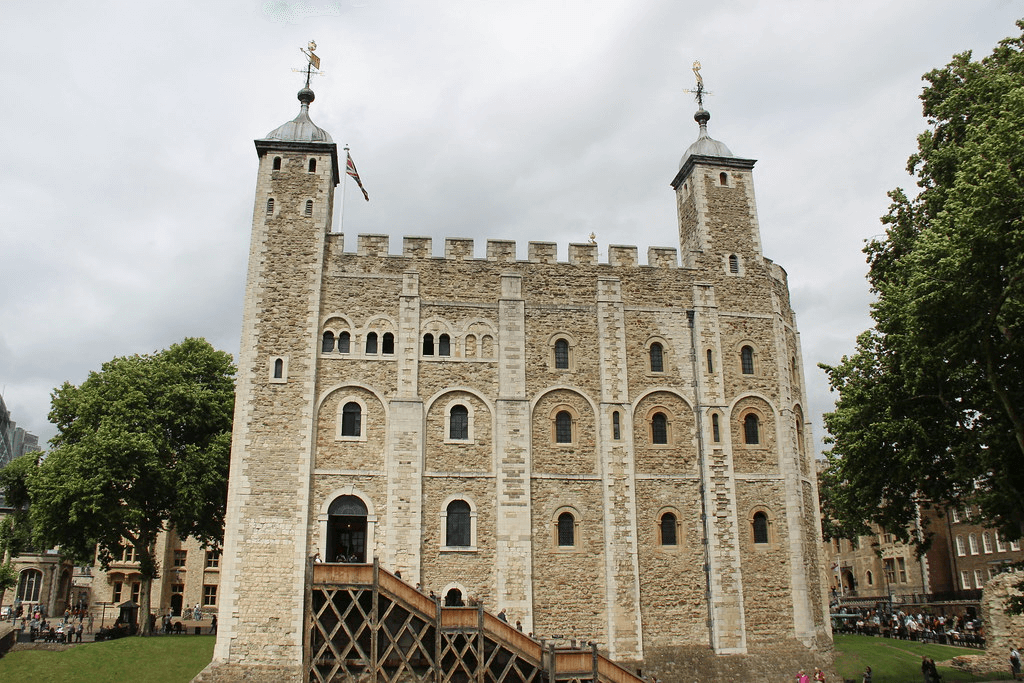
Brief History: The Tower of London’s foundation was laid by William the Conqueror in 1066 as part of his strategy to control London and assert Norman power. Originally designed as a fortress and royal palace, the Tower has played various roles throughout history, including serving as a prison, treasury, mint, armory, and home of the Crown Jewels. Its history is steeped in tales of intrigue, imprisonment, and execution, making it one of the most fascinating historical sites in England.
Architectural Highlights: The White Tower, the oldest part of the complex, is a quintessential example of Norman military architecture and has been the Tower’s enduring symbol. The surrounding curtain walls and smaller towers were added over the centuries, creating a formidable defensive structure. The Tower of London is also home to the Crown Jewels, housed in a vault within the Waterloo Block. The Jewel House provides a secure and fitting display for these symbols of monarchy, including the Imperial State Crown and the Sovereign’s Sceptre with Cross.
Visitor Information: The Tower of London offers a comprehensive experience for visitors, with the Yeoman Warders (or Beefeaters) providing guided tours full of historical insights and anecdotes. The viewing of the Crown Jewels, the Royal Armouries in the White Tower, and the infamous Bloody Tower where prisoners were held, are among the highlights. The Tower also hosts various reenactments and special exhibitions that bring its rich history to life. Advance ticket purchase is advised, and visitors should allot several hours to fully explore the extensive site.
Warwick Castle
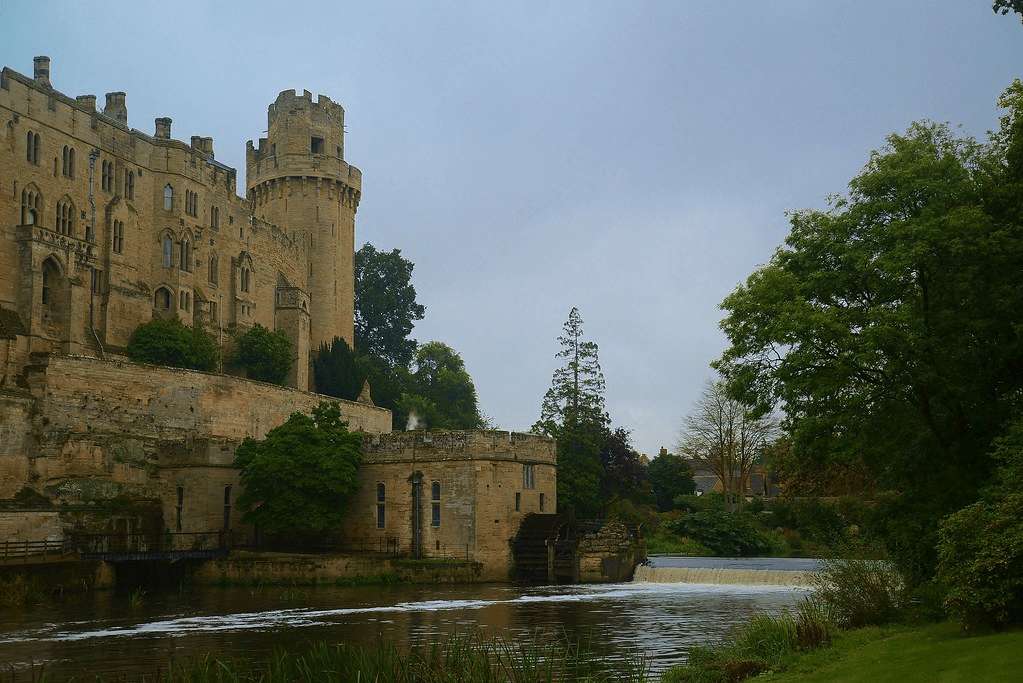
Brief History: Warwick Castle, a stone symbol of medieval England’s might, was initially built by William the Conqueror in 1068 as a wooden motte-and-bailey fortification. Throughout the Middle Ages, it was rebuilt in stone and became a formidable stronghold. It played a central role in several historical events, including the Wars of the Roses. The castle later transitioned into a luxurious country house in the 17th century, reflecting the changing tastes and priorities of its owners.
Architectural Highlights: The castle’s architecture is a testament to medieval military design, featuring massive stone walls, a prominent central keep, and defensive towers. The Great Hall and State Rooms were later additions that showcase the castle’s transition from a fortress to a residence, adorned with medieval armor and tapestries. The castle’s grounds and gardens, designed by Capability Brown, offer stunning landscapes and peacock-studded walks, adding to the site’s allure.
Visitor Information: Today, Warwick Castle is a vibrant historical attraction offering a range of experiences, from dungeon tours to falconry displays and knight tournaments, making it ideal for family visits. The castle also hosts themed events, including a Haunted Castle experience for Halloween and a spectacular Christmas light trail. Tickets can be purchased online, with options for day passes and annual passes offering unlimited entry.
Bamburgh Castle
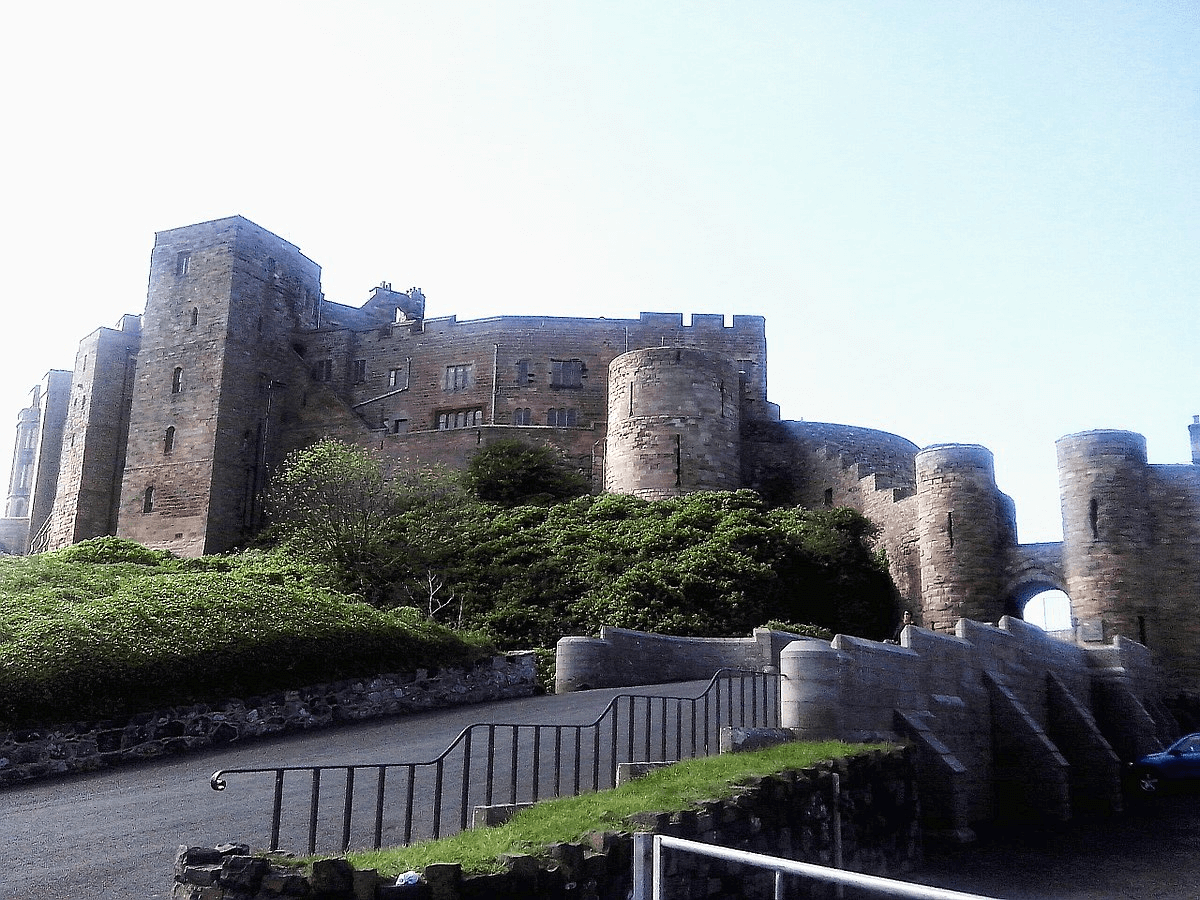
Brief History: Perched on the northeastern coast, Bamburgh Castle’s site has been occupied since prehistoric times. The current structure, however, dates back to the Norman period, with the fortress witnessing and withstanding numerous sieges and battles throughout its history. It was once the royal seat of the Kings of Northumbria. The castle fell into ruin but was restored in the 19th century by industrialist Lord Armstrong, who transformed it into a family home.
Architectural Highlights: Bamburgh Castle’s dramatic location atop a volcanic outcrop offers breathtaking views of the Northumberland coastline. The castle itself combines elements of medieval, Norman, and Victorian architecture, with its imposing keep and fortified walls dominating the skyline. Inside, the King’s Hall is a masterpiece of Victorian gothic revival, and the Armstrong and Aviation Artefacts museum within the castle grounds provides insight into the castle’s more recent history.
Visitor Information: Bamburgh Castle is open to visitors year-round, offering self-guided tours of its state rooms, museums, and grounds. The castle’s beach, one of the most beautiful in England, is just a short walk away, making it a perfect spot for a leisurely day out. Visitors can check the castle’s official website for opening times, ticket prices, and special events, including medieval reenactments and outdoor cinema nights.
Hever Castle
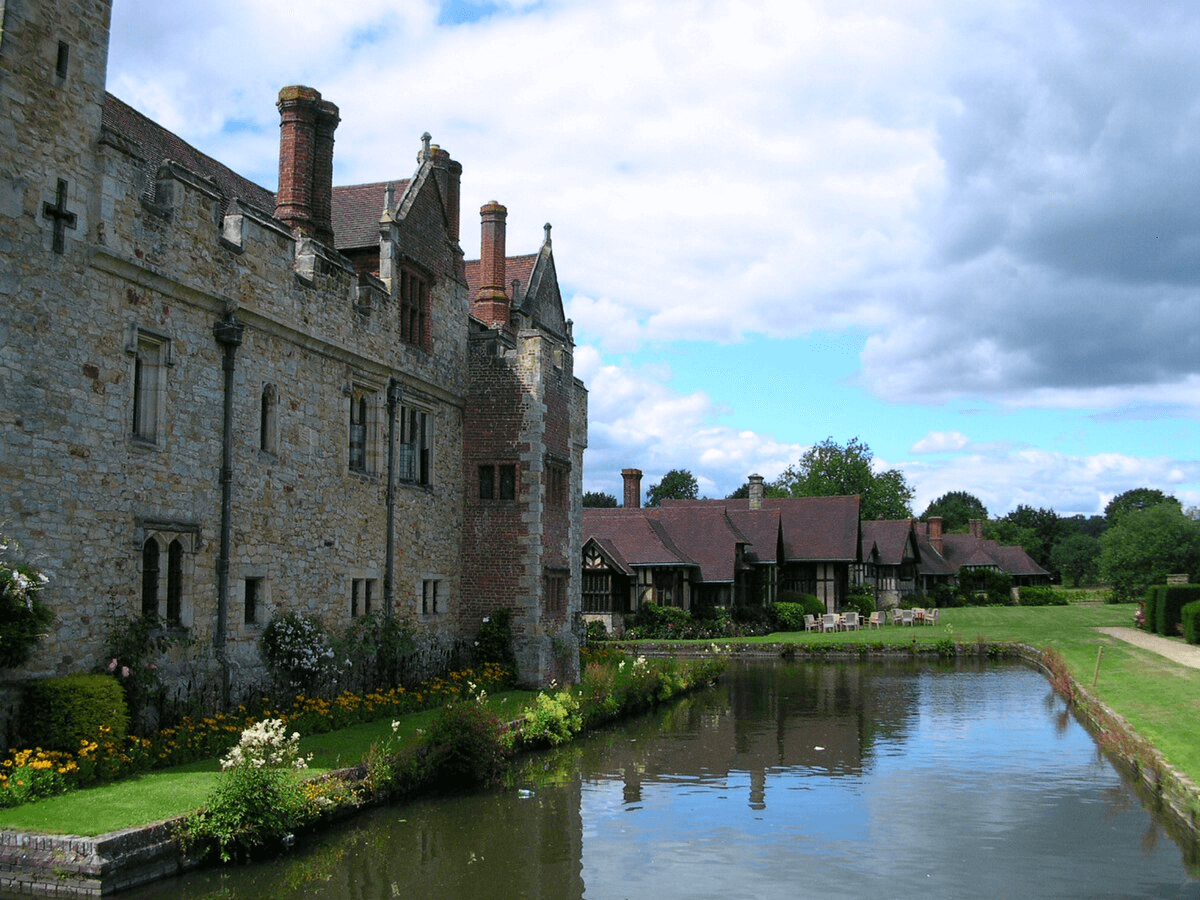
Brief History: Hever Castle, nestled in the Kent countryside, dates back to the 13th century but is best known as the childhood home of Anne Boleyn, the ill-fated queen of Henry VIII. After Anne’s death, the castle passed through various owners, including Henry VIII and the Astor family, who restored it in the early 20th century. The castle’s history is intimately linked with the tumultuous events of the Tudor period, making it a fascinating site for those interested in English Renaissance history.
Architectural Highlights: Hever Castle is a quintessential Tudor manor house, with its moat, drawbridge, and wooden paneling. The castle’s interiors are richly furnished, reflecting both its medieval origins and Tudor renovations. The gardens and grounds are equally impressive, featuring Italianate gardens, a Tudor garden, and a yew maze, offering a peaceful retreat into nature.
Visitor Information: Hever Castle offers a wide range of activities and events, from jousting tournaments and archery to Christmas markets and garden tours. The castle’s “Castle & Gardens” ticket provides access to the castle, gardens, and grounds, with the option for guided tours available. Accommodation is also offered, allowing guests to stay in luxury rooms within the castle grounds. Visiting during the week or outside peak holiday seasons is recommended to avoid crowds.
Leeds Castle
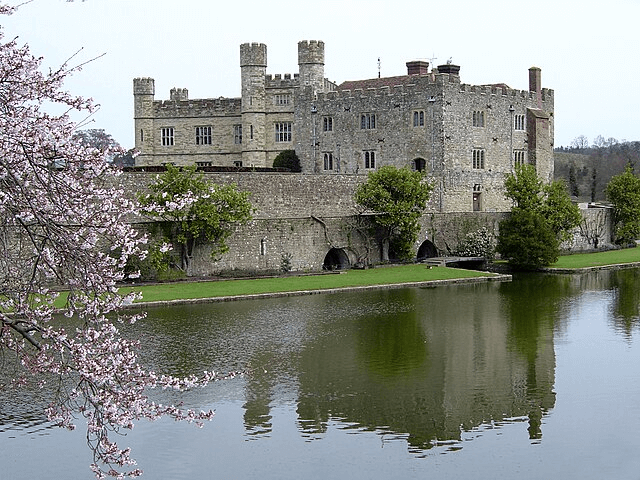
Brief History: Dubbed the “loveliest castle in the world” by historian Lord Conway, Leeds Castle has a history that stretches back over 900 years. Originally built in 1119 by Robert de Crevecoeur as a Norman stronghold, the castle has been the private property of six of England’s medieval queens and a palace used by Henry VIII and his first wife, Catherine of Aragon. The castle was transformed in the 20th century by Lady Baillie, who restored it to its former glory.
Architectural Highlights: Situated on two islands in the middle of a lake, Leeds Castle presents an enchanting scene. Its architecture is a blend of Norman, Tudor, and Jacobean styles, with the Gloriette, built by Edward I, remaining as the oldest part of the castle. The interiors are equally impressive, featuring collections of medieval furnishings, tapestries, and paintings.
Visitor Information: Leeds Castle offers a plethora of activities and attractions, including the famous maze, aviary, and beautiful gardens. The castle hosts events throughout the year, such as the Leeds Castle Classical Concert and Christmas markets. Visitors are encouraged to buy tickets online to benefit from discounts and to check the calendar of events for special activities during their visit.
Alnwick Castle
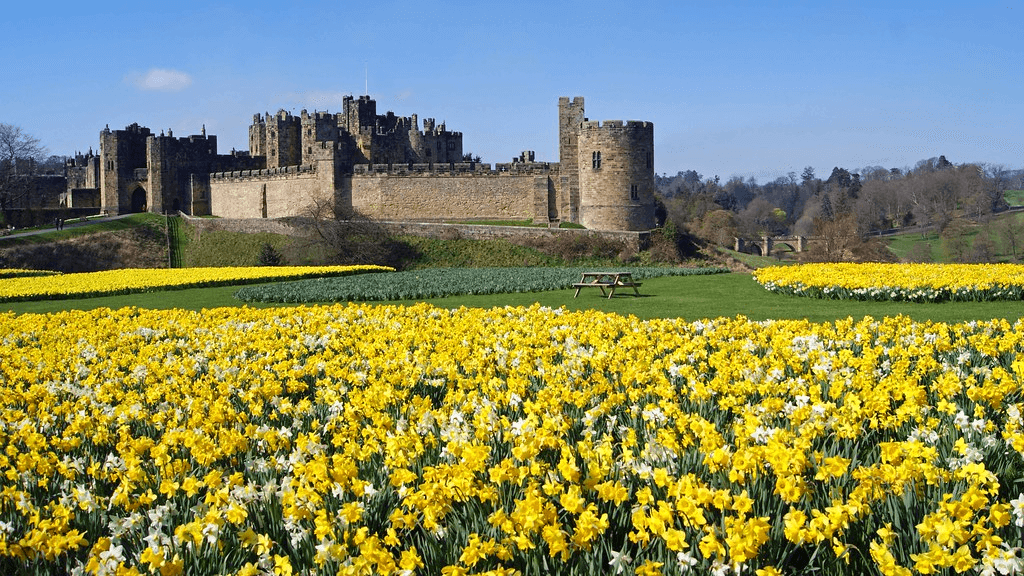
Brief History: Alnwick Castle, the second largest inhabited castle in England after Windsor Castle, has been the home of the Percy family, the Dukes of Northumberland, for over 700 years. Its rich history includes a key role in the border wars against Scotland and serving as a military outpost during the English Civil War. More recently, Alnwick Castle has gained fame as a filming location for the Harry Potter films and Downton Abbey.
Architectural Highlights: The castle is renowned for its iconic medieval and Norman architecture, including the imposing Alnwick Keep. The State Rooms are a showcase of Italian Renaissance design, filled with an impressive collection of art, furniture, and porcelain. The Alnwick Garden, adjacent to the castle, is a modern wonder featuring water sculptures, a poison garden, and one of the world’s largest treehouses.
Visitor Information: Alnwick Castle offers a variety of tours, including history tours, garden tours, and broomstick training sessions inspired by its Harry Potter connections. It’s a family-friendly destination with activities and exhibits that appeal to all ages. Advance booking is recommended, especially during peak tourist seasons.
Arundel Castle
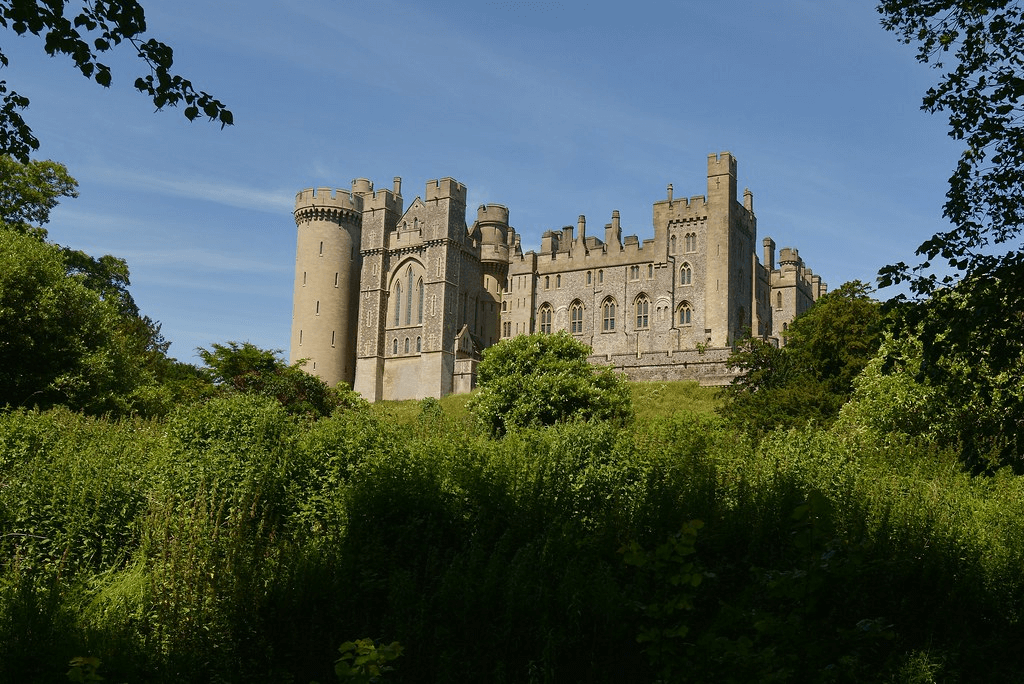
Brief History: Arundel Castle, founded on Christmas Day 1067 by Roger de Montgomery, Earl of Arundel, has been the seat of the Dukes of Norfolk and their ancestors for nearly a thousand years. The castle has undergone extensive restorations and modifications over the centuries, particularly in the 18th and 19th centuries, blending medieval architecture with Gothic revival elements.
Architectural Highlights: Arundel Castle stands out for its striking Norman keep, Gothic chapel, and beautiful Victorian restoration. The castle’s interiors feature fine furniture, tapestries, and a rare collection of personal belongings of Mary, Queen of Scots. The gardens, particularly the White Garden and the Stumpery, are acclaimed for their design and plant collections.
Visitor Information: The castle and gardens are open to the public from April to October, offering a range of events, including medieval jousting tournaments and garden tours. Visitors can explore the castle’s many rooms, the Fitzalan Chapel, and the extensive grounds. Tickets are available for purchase online, with options for castle, garden, or full estate access.
Conwy Castle
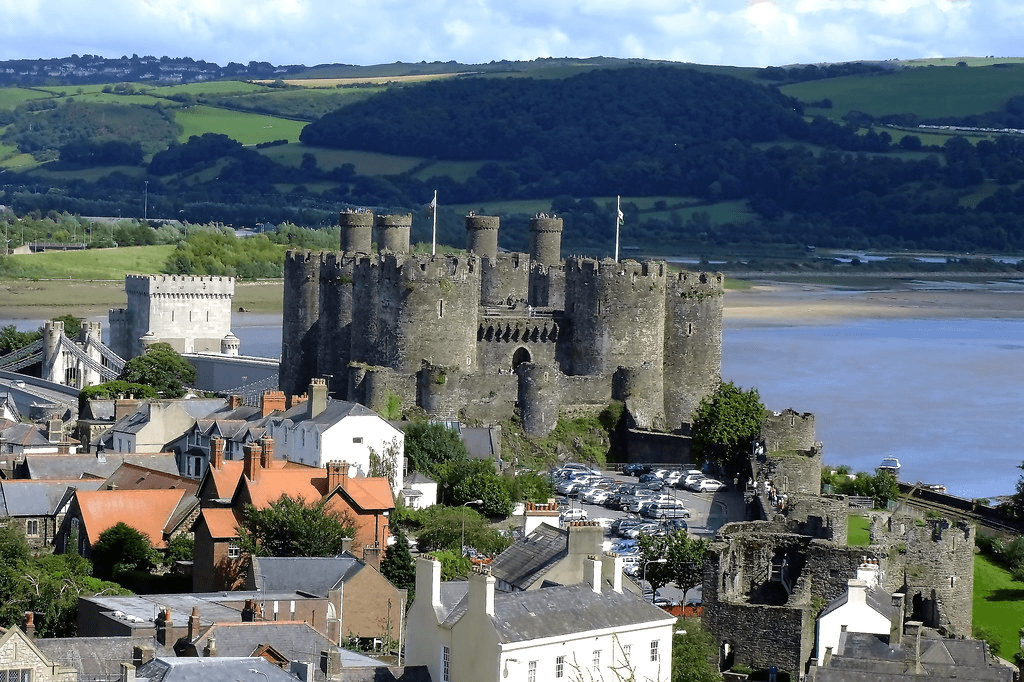
Brief History: Built by Edward I during his conquest of Wales, Conwy Castle is one of the key fortresses in the “iron ring” of castles designed to subdue the Welsh. Constructed between 1283 and 1289, this UNESCO World Heritage Site is one of the best-preserved medieval fortifications in Britain, emblematic of Edward I’s military and architectural ambitions.
Architectural Highlights: Conwy Castle’s massive curtain walls and eight towers offer stunning views of the surrounding town and estuary. The castle’s interior, although ruinous, provides a vivid sense of medieval life and military strategy. The King’s Hall, the chapel, and the royal chambers are particularly notable for their architectural and historical significance.
Visitor Information: Managed by Cadw, the Welsh government’s historic environment service, Conwy Castle offers visitors the opportunity to explore its towers, ramparts, and history through self-guided tours. The castle hosts various events throughout the year, including historical reenactments. Visitors are advised to check opening times and event schedules in advance.
Tintagel Castle
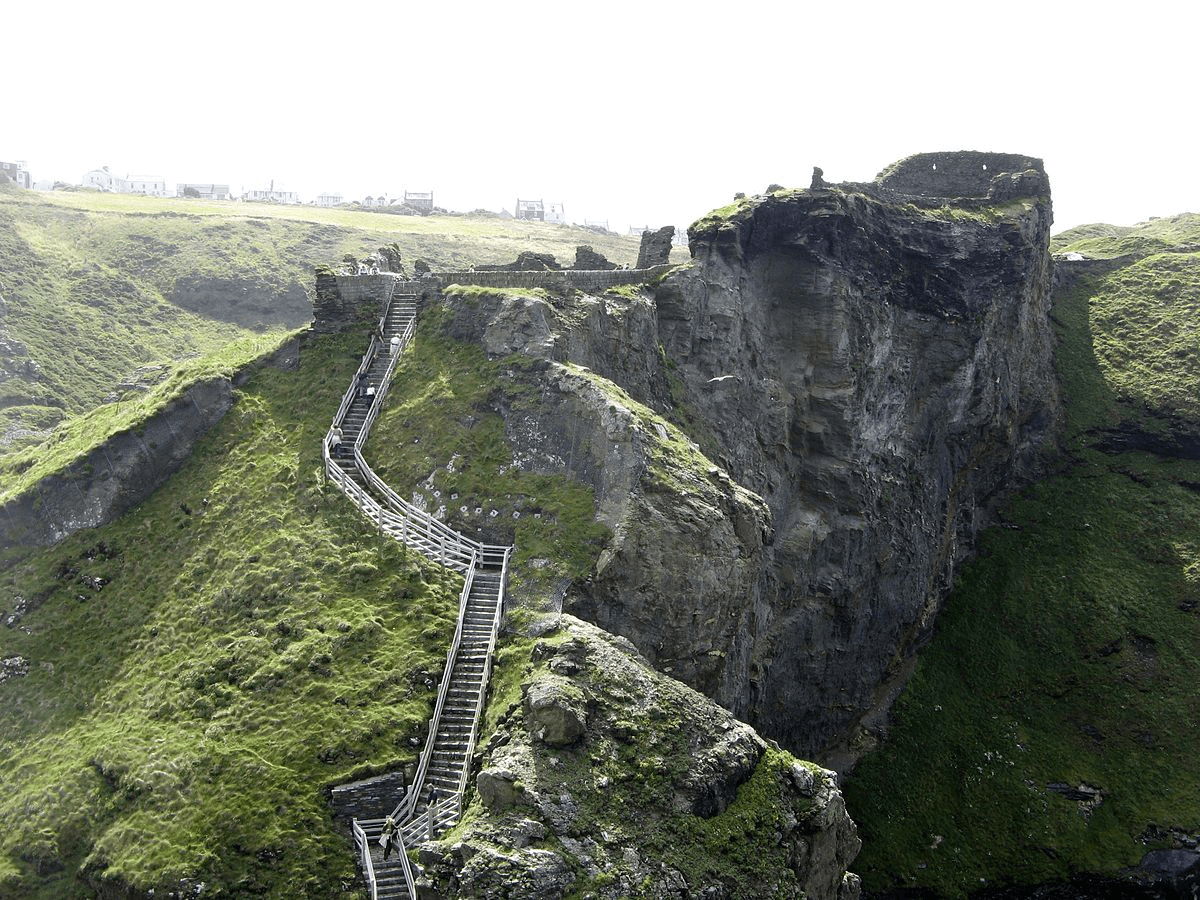
Brief History: Perched on Cornwall’s rugged coastline, Tintagel Castle is steeped in legend and mystery, famously associated with the tales of King Arthur. The site combines elements of historical and mythological significance, with evidence of settlement dating back to the Roman era. The medieval castle, built by Richard, Earl of Cornwall in the 13th century, capitalized on the Arthurian legends to bolster its status and allure.
Architectural Highlights: The ruins of Tintagel Castle sprawl across the cliff tops, offering dramatic sea views and a sense of ancient mystique. Recent archaeological discoveries have provided insight into the site’s significance in the Dark Ages, adding depth to its legendary associations. The recently installed footbridge reconnects the mainland and island sections of the castle, enhancing accessibility while preserving the site’s historic integrity.
Visitor Information: Managed by English Heritage, Tintagel Castle is a must-visit for those interested in Britain’s medieval history and Arthurian legend. The site includes exhibitions, a café, and shop. Due to its coastal location, visitors should be prepared for variable weather conditions. Advance booking is recommended, especially during the summer months.
Photo Author Rawac
Conservation and Tourism
The preservation of England’s castles has become a pivotal aspect of cultural heritage management, blending the need to maintain historical integrity with the demands of modern tourism. These efforts ensure that castles remain not only as monuments to the past but as living entities that continue to engage and educate.
Conservation Challenges and Strategies
- Structural Integrity: Many castles face challenges related to age, weathering, and previous restoration attempts that may have used damaging materials or techniques. Conservationists now employ a mix of traditional craftsmanship and modern technology to restore and maintain these structures without compromising their historical authenticity.
- Funding and Resources: Conservation work is often expensive and requires specialized skills. Organizations such as English Heritage and the National Trust, along with private owners, rely on a combination of government grants, private donations, and income from tourism to fund ongoing maintenance and restoration projects.
- Balancing Accessibility with Preservation: As popular tourist attractions, castles must be accessible while ensuring that foot traffic and environmental exposure do not lead to deterioration. This is managed through careful planning of visitor routes, limiting access to particularly vulnerable areas, and providing information that encourages respectful behavior.
Role of Organizations
- English Heritage and the National Trust: These organizations are at the forefront of castle conservation in England, overseeing numerous properties. They undertake conservation projects, research into historical building techniques, and educational programs to raise awareness about the importance of preservation.
- Private Ownership: Some castles remain in private hands but are open to the public. These owners often work closely with heritage organizations to ensure their properties are preserved and accessible.
Impact of Tourism
- Economic Benefits: Tourism provides essential revenue that supports the upkeep of these historical sites. Entry fees, guided tours, and special events all contribute to the financial sustainability of castle maintenance.
- Educational Value: Castles serve as dynamic classrooms, offering visitors insights into medieval life, architecture, and history. Educational programs and interactive exhibits enhance the learning experience for all ages.
- Cultural Significance: By visiting castles, people connect with the past in a tangible way, fostering a sense of identity and continuity. Castles also play a role in community pride and are often involved in local cultural events and traditions.
Case Studies of Successful Conservation
- Warwick Castle: Managed by Merlin Entertainments, Warwick Castle has seen significant investment in both conservation and visitor experience, ensuring the site remains a vibrant part of England’s heritage landscape.
- Dover Castle: English Heritage has undertaken extensive conservation work at Dover Castle, including the restoration of medieval interiors and the installation of interactive exhibits that bring the castle’s history to life.
Conservation and responsible tourism ensure that England’s castles can be enjoyed by future generations, preserving these historic landmarks as symbols of heritage and cultural identity. As we move to the next section, we will offer practical advice for visitors, ensuring they can enjoy these magnificent sites while respecting their preservation needs.
Visiting the Castles: Tips and Recommendations
Exploring England’s castles can be a highlight of any trip, blending history, architecture, and stunning landscapes. To ensure a memorable and respectful visit, consider these tips and recommendations.
Best Times to Visit
- Avoid Peak Times: To escape the crowds, visit on weekdays or during shoulder seasons (spring and autumn). Early mornings or late afternoons are quieter, offering a more personal experience.
- Special Events: Check the castle’s event calendar for special openings, reenactments, or evening tours, which can provide unique experiences beyond the standard visit.
Ticket Purchasing Tips
- Advance Tickets: Many castles offer the option to purchase tickets online in advance, often at a discount. This not only saves money but also time, allowing you to bypass long entry lines.
- Membership Options: If planning to visit multiple sites managed by organizations like English Heritage or the National Trust, consider purchasing a membership for free entry and additional benefits.
Avoiding Crowds
- Off-the-Beaten-Path: While famous castles like Windsor and the Tower of London are must-sees, exploring lesser-known castles can offer equally rich experiences without the crowds. Consider castles like Bodiam, Ludlow, or Raby for a quieter visit.
- Guided Tours: Many castles offer guided tours, which can provide a more structured visit with the added benefit of learning from knowledgeable guides. These often take you to less crowded areas of the castle.
Enhancing Your Visit
- Local Attractions: Research nearby attractions or natural beauty spots to complement your castle visit. England’s countryside is dotted with charming villages, historic sites, and scenic walks.
- Stay Nearby: For a truly immersive experience, consider staying in or near the castle. Some castles offer accommodation, ranging from luxurious rooms to atmospheric medieval chambers.
Respectful Visitation
- Conservation Rules: Follow any guidelines provided by the castle, such as not touching ancient walls or taking flash photography in sensitive areas. These rules are in place to protect the sites.
- Leave No Trace: Be mindful of your impact on the environment around castles, especially those in rural or protected areas. Dispose of litter responsibly and stay on marked paths.
Conclusion
England’s castles are not just stone and mortar; they are gateways to the past, offering a glimpse into the lives, battles, and stories of those who lived centuries ago. By visiting these historic sites, we connect with a rich cultural heritage and ensure its preservation for future generations. Whether you’re exploring the grandeur of Windsor, the towers of the Tower of London, or the ruins of Tintagel, each castle visit promises a journey through history, filled with tales of chivalry, intrigue, and power.
As you plan your castle explorations, remember to tread lightly, respect the preservation efforts, and immerse yourself in the stories of England’s majestic past. These castles are cherished parts of the landscape and history, inviting us all to discover the narratives held within their walls. Happy exploring!

